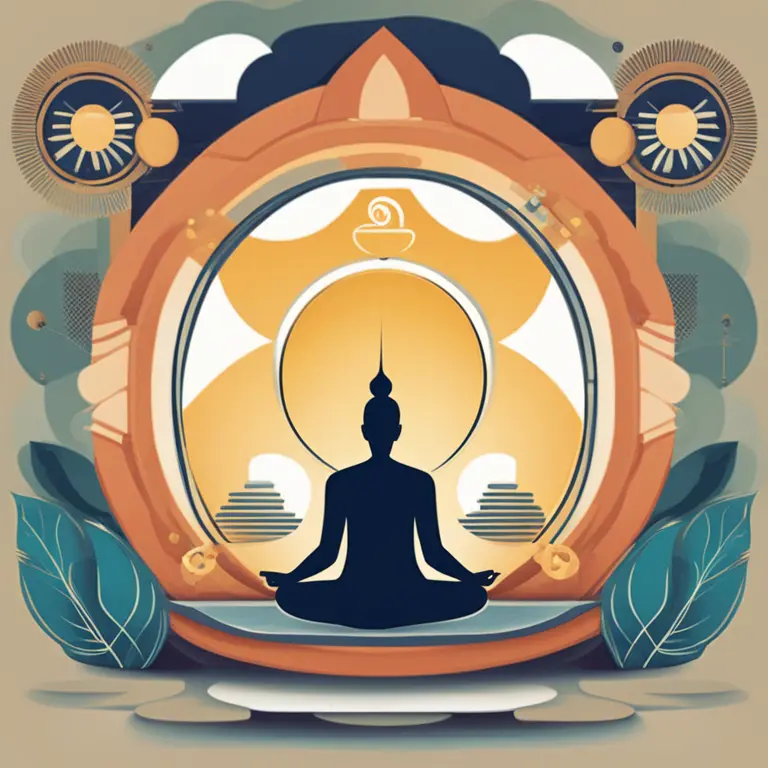
Meditation and the Philosophy of Existence
Delving into a meditation practice inspired by the famous philosophical statement "I think, therefore I am".
article by Hina Kurosawa
Meditating on Self-Awareness
Meditation has long been a conduit for introspection and self-awareness, offering a path to understand our own existence. Rooted in the philosophy of René Descartes, the dictum "Cogito, ergo sum" or "I think, therefore I am" provides a powerful anchor for contemplative practice. This approach to meditation involves focusing on the act of thinking as a testament to one's existence, exploring the dimensions of self through the lens of our conscious thoughts. By observing our mental processes, we align with the fundamental certainty of our being, cutting through the layers of doubt and uncertainty that often plague our minds.

Guided by Thought
A "I think, therefore I am" meditation practice typically begins by finding a quiet space to minimize distractions. Practitioners can start by repeating the phrase slowly, either aloud or silently, letting the implications of these words sink in. As one meditates on this affirmation, it becomes more than a thought—it becomes an experience, with the rhythmic repetition serving as a grounding mechanism. Here, the meditator is encouraged to explore the presence of their own thoughts, acknowledging them as evidence of their existence and interconnectedness with the universe.

Being in the Present
The relevancy of this form of meditation is heightened in an era where mindfulness has gained credence in psychological communities for its health benefits. Contemporary iterations of the practice suggest focusing on the present moment as a confirmation of the self. Current thought underscores the power of now—recognizing that existence is not only tied to our capacity to think but also to our presence in the immediate. This nuanced meditation urges individuals to engage with the present, embodying Descartes’ proposition through a conscientious awareness of the here and now.

The Skeptical Inquiry
Incorporating elements of skepticism is an emergent trend in 2024's meditation landscapes. Skepticism was, after all, a central theme in Descartes' philosophical experiment. By questioning everything except the undoubtable existence of the thinking self, we reach a state of hyper-awareness. Practitioners of this meditative form use skepticism as a tool to peel away preconceived notions about the world and the self, returning to the pure state of cognizance where the only truth is the fact of one's thoughts and, therefore, existence.

Interconnecting Mind and Body
As the practice evolves, a symbiotic relationship between mind and body is increasingly emphasized. The phrase "I think, therefore I am" transcends to incorporate "I exist, therefore I am." The mind-body dualism that Descartes is known for has taken a backseat to a more holistic approach. The body, with its own wisdom and energies, becomes an integral part of the meditation. Participants focus on their breath, physical sensations, and emotional states—each providing additional affirmation of their being, fusing cognitive recognition with physical embodiment.
Technology Meets Philosophy
With the proliferation of virtual reality (VR) and augmented reality (AR), technologically aided meditations have become a key part of spiritual practice, introducing new dimensions to the foundational "I think, therefore I am" concept. These immersive experiences can intensify the meditation, placing individuals into environments designed to stimulate self-reflection and mindfulness. By leveraging these cutting-edge technologies, users can delve deeper into the essence of their consciousness, exploring the relationship between their thoughts and their digital as well as the corporeal existence.
Meditation as Universal Connection
Lastly, the individual practice of "I think, therefore I am" meditation harmonizes with the interconnected nature of the universe. This understanding honors the notion that while each of us proves our existence through thought, we are not isolated. We exist in a web of life, where each conscious entity contributes to the collective experience of being. Through this meditation, practitioners can experience a profound connection to all that is, made possible by the simple act of contemplating existence.
Published: 1/14/2024
Modified: 1/15/2024
More predictions
Come back here soon to learn more about yourself and your future


Easing Loneliness with Mindfulness Meditation
Explore how mindfulness meditation can provide solace and connection to alleviate the feelings of loneliness.


Easing Loneliness with Meditation
Discover how mindfulness meditation can provide solace and connection to mitigate feelings of loneliness, enhancing emotional and mental well-being.


Discovering Life with Meditation Mantras
Delve into the transformative power of meditation mantras to harmonize your mind, body, and spirit for a tranquil existence.